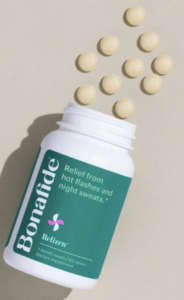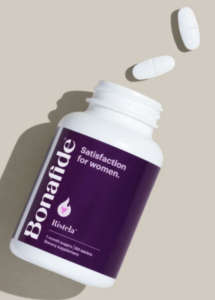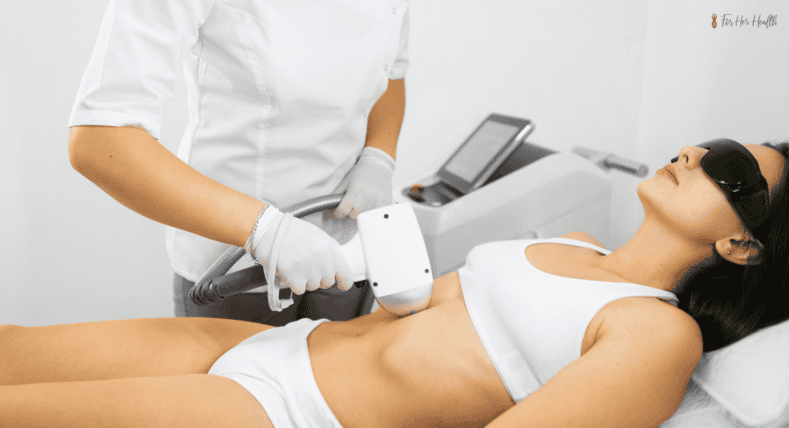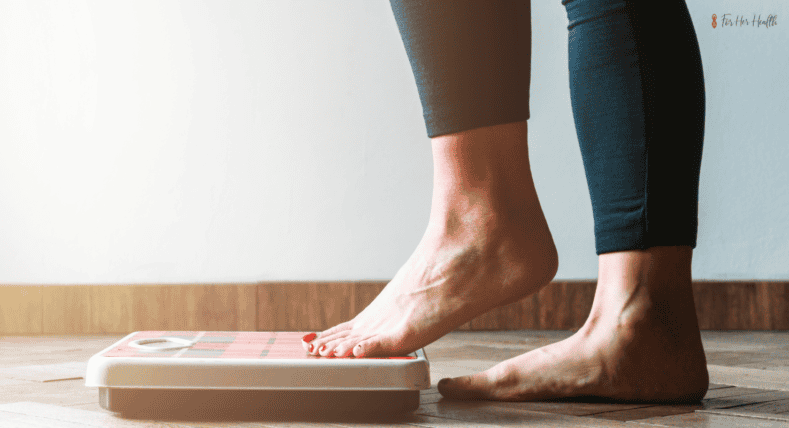-
What is menopause?
Menopause is the phase of your life when you cease having menstrual cycles naturally. Estrogen is a hormone that contributes to the regulation of the menstrual cycle, and when ovaries stop producing it, menopause happens. The reproductive years come to an end with menopause. Women reach menopause at an average age of 51 years.
-
What is perimenopause?
Perimenopause refers to the years preceding menopause. The amount of estrogen generated by the ovaries begins to fluctuate throughout your 30s and 40s. A change in your menstrual cycle is a common during this period. You might start skipping cycles and it can become longer or shorter than usual. It’s also possible that the flow will get lighter or heavier.
You should inform your doctor about these changes on your menstrual cycle, even though they are common during perimenopause. Abnormal bleeding could indicate an issue.
-
What other signs and symptoms can happen during perimenopause?
During perimenopause, some women experience no or just a few moderate symptoms. Others have symptoms that can be quite severe. The following are some of the most common signs and symptoms:
-
- Hot flashes—An intense burst of heat that radiates from the upper body to the face. It might last anywhere from a few seconds to many minutes. Some women get hot flashes daily while others only a few times a month. Nighttime hot flashes (night sweats) might wake you up and make you feel tired and sluggish during the day.
- Sleep issues— night sweats might make it difficult to sleep. You may have insomnia (difficulty getting asleep) or you may wake up much earlier than normal.
- Changes in the vaginal and urinary tract—As estrogen levels drop, the vaginal lining may become thinner, dryer, and less elastic. During sex, vaginal dryness can cause pain. Vaginal infections may also be more common. You can experience irritation, inflammation, or dryness in the urethra. Urination may become more frequent as a result, increasing the risk of urinary tract infections.
-
What types of bone changes can occur after menopause?
Both men and women experience a minor degree of bone loss after the age of 35. Women, on the other hand, lose bone more quickly in the first 4–8 years after menopause because estrogen levels are low. Osteoporosis can be aggravated if too much bone is lost. Bone fractures are more likely in those with osteoporosis. The hip, wrist, and spine bones are the most impacted.
-
What other health risks increase during perimenopause and menopause?
Before menopause, estrogen released by women’s ovaries protects them from heart attacks and strokes. Women lose a lot of this protection after menopause because less estrogen is produced. Risk factors for heart disease, such as high cholesterol, high blood pressure, and a lack of physical activity, become more common during midlife. In menopausal women, the combination of all of these raises the risk of heart attack and stroke.
-
What is hormone therapy and how it works?
Hormone therapy means taking estrogen and, if you have never had a hysterectomy and still have a uterus, a hormone called progestin. It helps relieve perimenopause and menopause symptoms. “Combined hormone therapy” or just “hormone therapy” refers to the use of estrogen and progestin together. When estrogen is taken alone, it increases the risk of uterine cancer. Taking progestin reduces this risk. Estrogen is given without progestin if you don’t have a uterus. “Estrogen treatment” is a term used to describe estrogen-only therapy.
Systemic forms of treatment include estrogen pills, skin patches, gels, and sprays applied to the skin, when the hormone is released into the bloodstream and travels to the organs and tissues where it is needed. Progestin can be taken alone or in combination with estrogen in the form of a pill or a patch. Women with vaginal dryness may be prescribed “local” estrogen therapy (vaginal ring, pill, or ointment), and small quantities of estrogen are released into the vaginal tissue.
Systemic estrogen helps to prevent hip and spine fractures by preventing bone loss that happens early in menopause. Colon cancer risk may be reduced by combining estrogen and progestin medication.
-
What are the risks of hormone therapy?
Hormone therapy may increase the risk of certain types of cancer and other conditions:
-
- Estrogen-only therapy causes the uterine lining to thicken, raising the risk of uterine cancer.
- Combination hormone therapy is linked to a slight increase in the risk of heart attack. This risk may be linked to a woman’s age, pre-existing medical issues, and when she begins hormone therapy.
- Combined hormone therapy and estrogen-only therapy are linked to a slight increase in the risk of stroke and DVT (DVT). Non-oral therapies (patches, sprays, rings, and others) may have a lower risk of developing deep vein thrombosis than oral therapies. Combination hormone therapy is linked to a slight increase in the risk of breast cancer.
- Estrogen therapy (with or without progestin) is linked to a modest increase in the risk of gallbladder disease. With oral forms of therapy, the risk is higher.
-
Can other medications help with menopause symptoms?
Prescription medications such as gabapentin (antiseizure medication), and clonidine (a blood pressure medication) can be used to reduce hot flashes and sleep issues associated with menopause. SERMs (selective estrogen receptor modulators) are drugs that act on estrogen-responsive tissues. Hot flashes and pain during intercourse due vaginal dryness can be relieved by SERMs.
-
Can plant and herbal supplements help with menopause symptoms?
Soy, black cohosh, and Chinese herbal medicines are examples of plants and herbs that have been used to alleviate menopause symptoms. Only a few of these substances have been thoroughly researched for their safety and efficacy. The manufacturing of these goods is not regulated. There is no guarantee that the product includes safe ingredients or amounts of the substance that are effective. If you do decide to use one of these products, make sure to tell your doctor.

https://hellobonafide.com/products/relizen

https://hellobonafide.com/products/ristela
-
Can bioidentical hormones help with menopause symptoms?
Plants are the source of bioidentical hormones. Commercially accessible products as well as compounded medications are included. A compounding pharmacist creates bioidentical hormones based on a prescription from a health care provider. The US Food and Drug Administration does not regulate compounded medications (FDA). Compounding pharmacies must be licensed, but they are exempt from the FDA’s safety, efficacy, and quality control requirements. FDA-approved hormone therapy is recommended by the American College of Obstetricians and Gynecologists over compounded hormone therapy.
- Can vaginal moisturizers and lubricants help with menopause symptoms?These over-the-counter medications can assist with vaginal dryness and painful sexual intercourse that might occur during menopause. They don’t affect the thickness or elasticity of the vaginal because they don’t contain any hormones. Vaginal moisturizers can be used as needed every 2–3 days. Lubricants can be used at any time during sexual activity.

https://hellobonafide.com/products/revaree ;
-
What can I do to stay healthy after menopause?
A healthy lifestyle can assist you in making the most of your postmenopausal years. Here are some suggestions for staying healthy:
-
- Nutrition—Eating a well-balanced diet before, during, and after menopause will help you stay healthy. Make sure you get enough calcium and vitamin D in your diet to keep your bones strong.
- Exercise—Consistent exercise reduces bone loss and promotes general health. Walking, for example, is a weight-bearing exercise that can help maintain bones strong. Strength training involves resisting against weight, such as your own body, an exercise band, or portable weights, in order to improve your muscles and bones. Balance exercises like yoga and tai chi can help you prevent falling and breaking your bones.
- Routine health care—Visit your health care provider, dentist and ophthalmologist every year to have regular exams and tests done. Routine health care visits, even if you are not sick, can help detect problems early.
Menopause Terminology
Antidepressants: Drugs that are used to treat depression.
Deep Vein Thrombosis (DVT): A condition in which a blood clot forms in veins in the leg or other areas of the body.
Estrogen: A female hormone produced in the ovaries.
Hormone: natural substances produced by the body that regulate the activity of cells and organs.
Hormone Therapy: A treatment that involves the administration of estrogen and, in certain cases, progestin to alleviate symptoms associated with menopause.
Hysterectomy: Surgery to remove the uterus.
Menopause: when a woman’s menstrual periods stop permanently. Menopause is confirmed after 1 year of no periods.
Menstrual Cycle: The monthly series of changes that occur to prepare a woman’s body for prospective pregnancy. The first day of menstrual bleeding of one cycle to the first day of menstrual bleeding of the next cycle is called menstrual cycle.
Osteoporosis: A condition of thin bones that could allow them to break more easily.
Ovaries: female organs that carry the eggs needed to conceive and produce vital hormones like estrogen, progesterone, and testosterone.
Perimenopause: The time period leading up to menopause.
Progestin: synthetic version of the hormone progesterone, which is similar to the hormone produced naturally by the body.
Urethra: a tube-like structure in the body. When urine leaves the body, it passes through this tube.
Uterus: A muscular organ in the female pelvis. During pregnancy this organ holds and nourishes the fetus.
Vagina: A tube-like structure surrounded by muscles. The vagina leads from the uterus to the outside of the body.
If you have further questions, contact your ob-gyn.
FAQ047
Published: December 2018
Last reviewed: July 2020
SOURCE: The Menopause Years | ACOG



